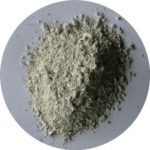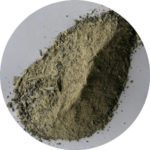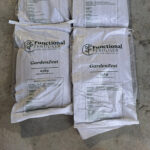PW Burton
The link between 750,000 tonnes of urea a year being applied to New Zealand soils and excess nitrate-N in streams, lakes, and groundwater is difficult to refute. In fact, of the many people that I’ve discussed the issue with, no-one denies that it exists.
As more measures are revealed, the link between geographical areas where the greatest amount of nitrogen is applied, and high concentrations of nitrate-N in groundwater, becomes increasingly obvious. Yet there is little, if any, reduction in the amount of N being applied., despite heated verbal claims, and a science presentation read recently claimed there had been a 700% increase in the last 20 years.
It’s been apparent for at least a decade to those monitoring water quality that, either a lot of our freshwater water will require considerable and expensive treating, or a reduction in the amount of N being applied will have to take place.
Common sense suggests that alternatives to current farming practices, whether it be limiting animal numbers or the amount of N applied, would have been sought before now by conventional science organisations supported by farmers.
And yet what has occurred has been a steady increase in the mount of N applied, and one of the reasons for that behaviour is the belief that, when the use of nitrogen fertiliser does become regulated it will be based on a percentage of that used over preceding years.
This process is known as grandparenting, and there’s historic precedence in agriculture for this with regard to water takes and nitrogen usage. The logic behind it was sound when the effect was minor and related to small pockets of land only, but things have changed.
New Zealand’s water quality is now both a national and international issue. It will determine where votes are cast in the coming general election, and one of the reasons for the interest in purchasing land and associated industries by overseas interests is our, as yet, relatively clean environment.
Those with the ability to take a long term view of our future know that continued fouling of the environment, because it’s what we’ve always done, is not the answer, and the argument that it’s a trade-off between short term economic production and long-term environmental viability is irrelevant.
Already new, overseas financed industry is starting up here, with the ability to pay animal farmers several times the money being currently received. It’s a welcome development and a necessary one as the financial returns from commodity trading are presently insufficient for the maintenance of our rural communities.
Two of the stated reasons for new industry starting here is the quality of the water and fertility of the soil. It’s a relative thing and should never be compromised, yet Graham Sparling, then of Landcare Research, wrote in his 2004 lecture notes Broader shoulders and smaller feet, “For a sustainable future we need to treat the land more gently, and reduce our environmental footprint.”
That has not happened, and the animals from which some in the farming community will be able to receive many times the value now provided by meat and milk, will only come from a small number of properties.
Those properties are being selected on the basis of their ability to produce animals that are superior in all respects. Animal quality is in large part determined by content of the pasture eaten, which in turn is reliant on the composition and overall quality of the soil.
There are already properties across the country not reliant on nitrogen fertiliser, and recent work has shown them to be sequestering carbon and increasing total pasture production steadily over time.
As more pasture is grown the conversion of sunlight to energy and full protein becomes more efficient, and it is these properties that are capable of sustainably providing the quality required, and which are already well positioned to enjoy significant financial gain. For more information contact Peter on 0800 843 809.




